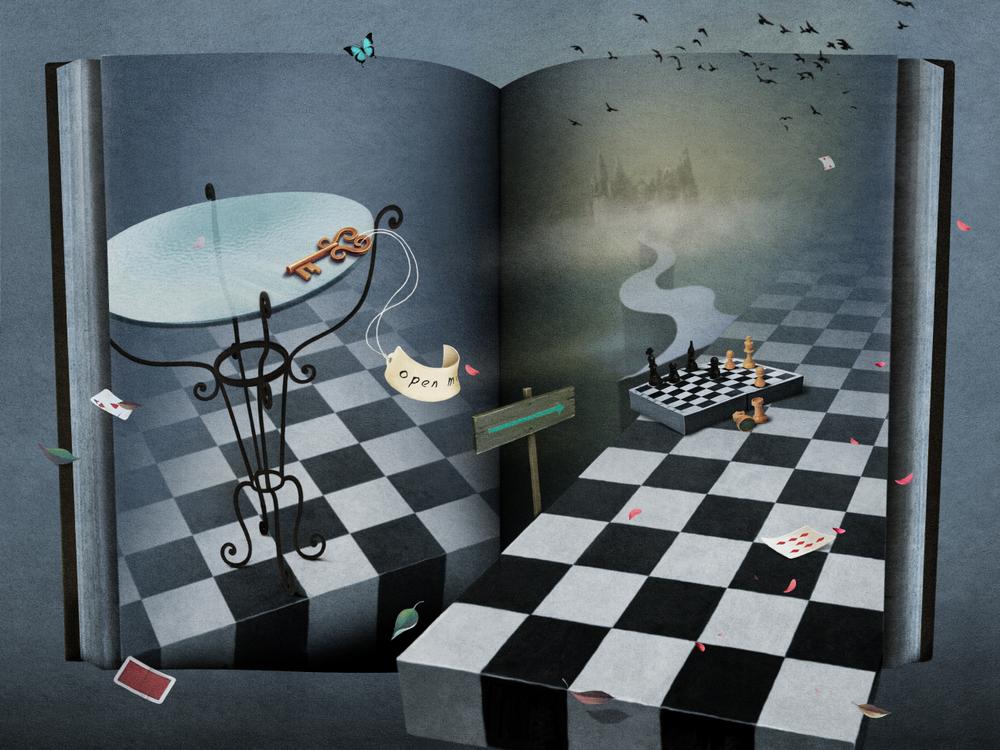
Why Is This Chess Gambit So Weird?
When I hear the word gambit, the first thing that pops up in my mind is the King's Gambit.
Yes, I am well aware that a gambit means a sacrifice to achieve certain benefits like initiative or an outright attack, and there is more to it than just the King's Gambit. Nevertheless, for me the word gambit is always associated with the King's Gambit, probably because it was the first gambit I learned as a kid.
The numerous games from the romantic era only strengthened this connection.

Look at the next game. White went all to start a direct attack against black king.
It was games like this that engraved the definition of a gambit into my mind as a kid. Of course as I grew up, I learned about other possible gambits in chess. Nevertheless all of them had something in common. When you play a gambit, you sacrifice some material and therefore avoid possible trades, as they would reduce the power of your initiative or attack.
Naturally, your opponent tries to do just the opposite and trades as many pieces as he can, trying to get the game into an endgame where his material advantage would become decisive.
That's why when I first saw games played with the Benko Gambit I couldn't understand what was going on. Black sacrifices a pawn there to get an initiative on the queenside and then tries to trade the queens and go straight into an endgame!
What's going on? Let's look at the following famous game that made this unique concept popular.
GM Bronstein explains Black's ideas in his book Zurich International Chess Tournament 1953:
What does Black achieve by sacrificing a pawn? First, he undermines the spearhead of the White's pawn chain, the pawn d5; in addition , after the unavoidable a7-a6 and b5xa6, he obtains a good diagonal a6-f1 for his bishop. The two open files Black obtains on the queenside allowing him active play against White's a- and b-pawns, also speak in favor of the sacrifice. Nor ought we to forget Black's Bg7: since Black intends to leave his e-pawn at e7 in this system, the bishop's sphere of activity is automatically increased. And finally, there is the interesting strategic idea (...) of developing the queen's rook without moving it from its original square.
Here is another extremely instructive comment from David Bronstein in the next position:
Black's endgame advantage is founded on the fact that his base pawn at e7 is close to home and therefore easy to defend, while the white pawn at c3 and e4 afterward excellent targets to Black's rooks. If the e-pawn advances, then the d5 pawn becomes weak. (...) Taimanov was correct in avoiding this exchange of queens—but he should also have avoided it later on.
These days Black usually uses a different move order to play this opening concept. This is what the modern Benko gambit looks like:
Nevertheless, the ideas described by GM Bronstein are as valid today as they were more than 60 years ago. Look at the recent game where White was suffering in the endgame despite her extra outside passed pawn!
You shouldn't think that going for an endgame is Black's only idea in the Benko Gambit. His active pieces and strategic initiative can be very powerful in the middlegame as well. Look at the pathetic position super-grandmaster Vlastimil Hort got himself into. Despite his extra queen, he could barely move!
That's why we have a paradoxical situation in the Benko gambit: Despite his material loss, Black is playing a slow positional game looking for an endgame. From the other side, White refuses to go to an endgame and instead is trying to attack.
The Zaitsev variation that was briefly mentioned in this article is a good example.
This peculiar opening definitely deserves your attention. Even if you never play it in your life, the analysis of the typical strategic situations that happen in the Benko gambit will unquestionably broaden your chess knowledge.






